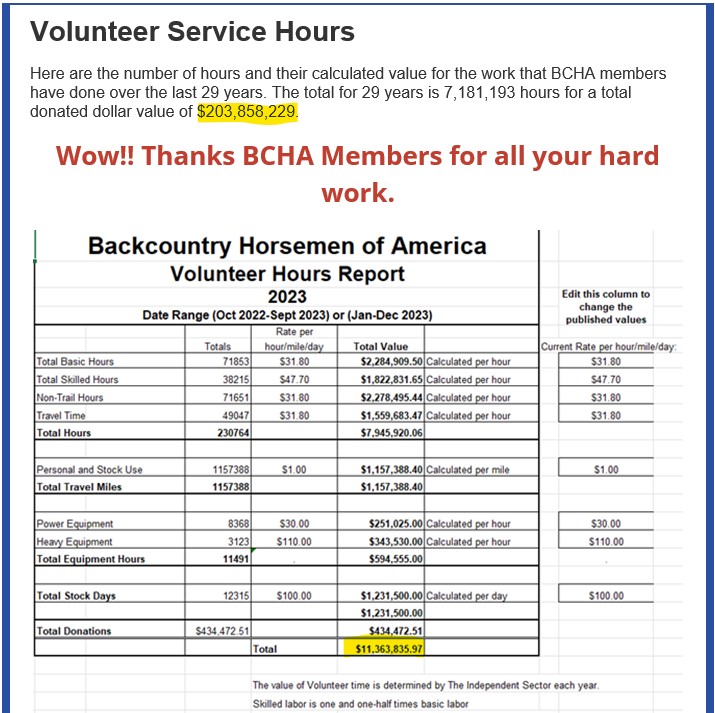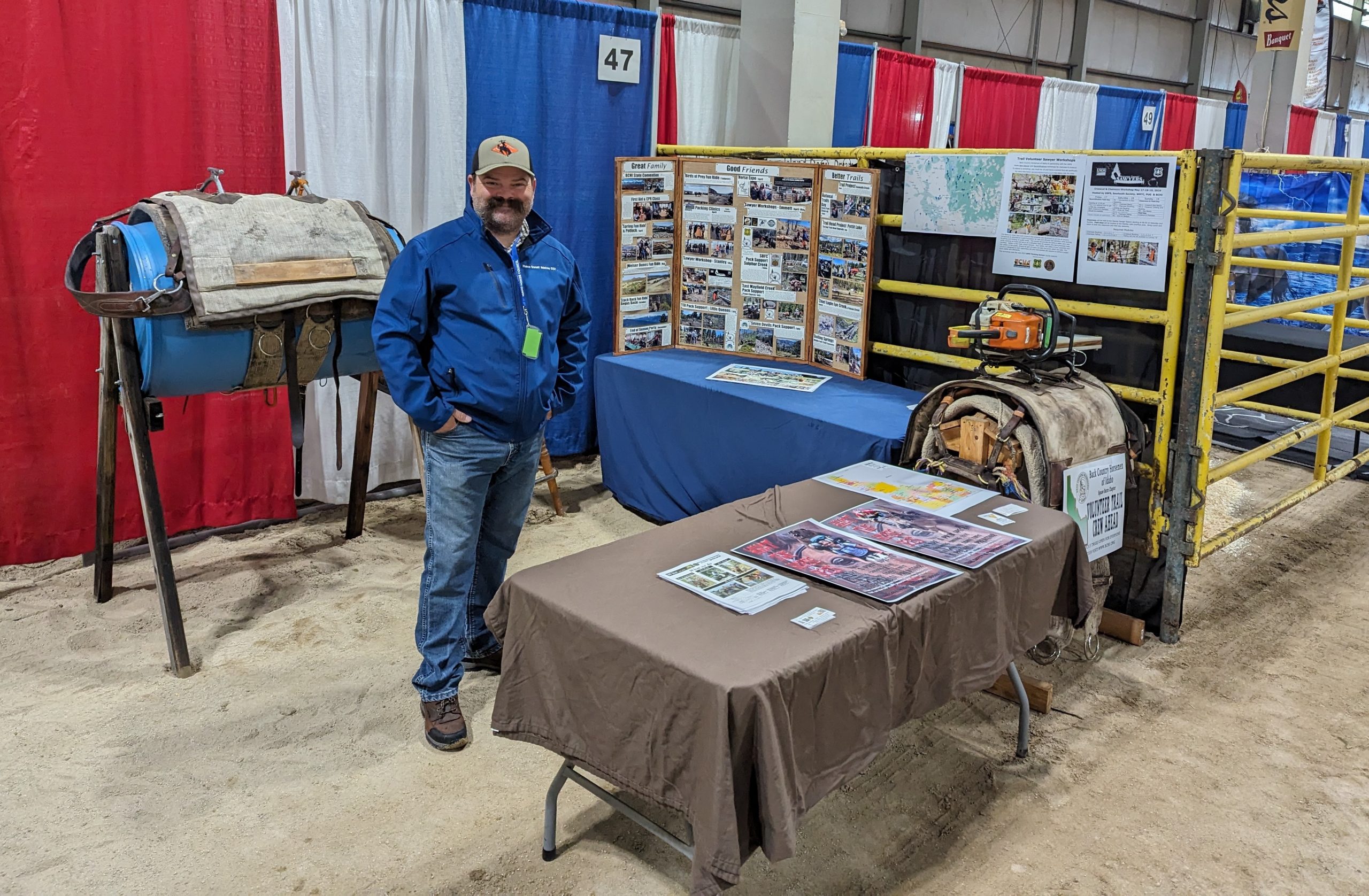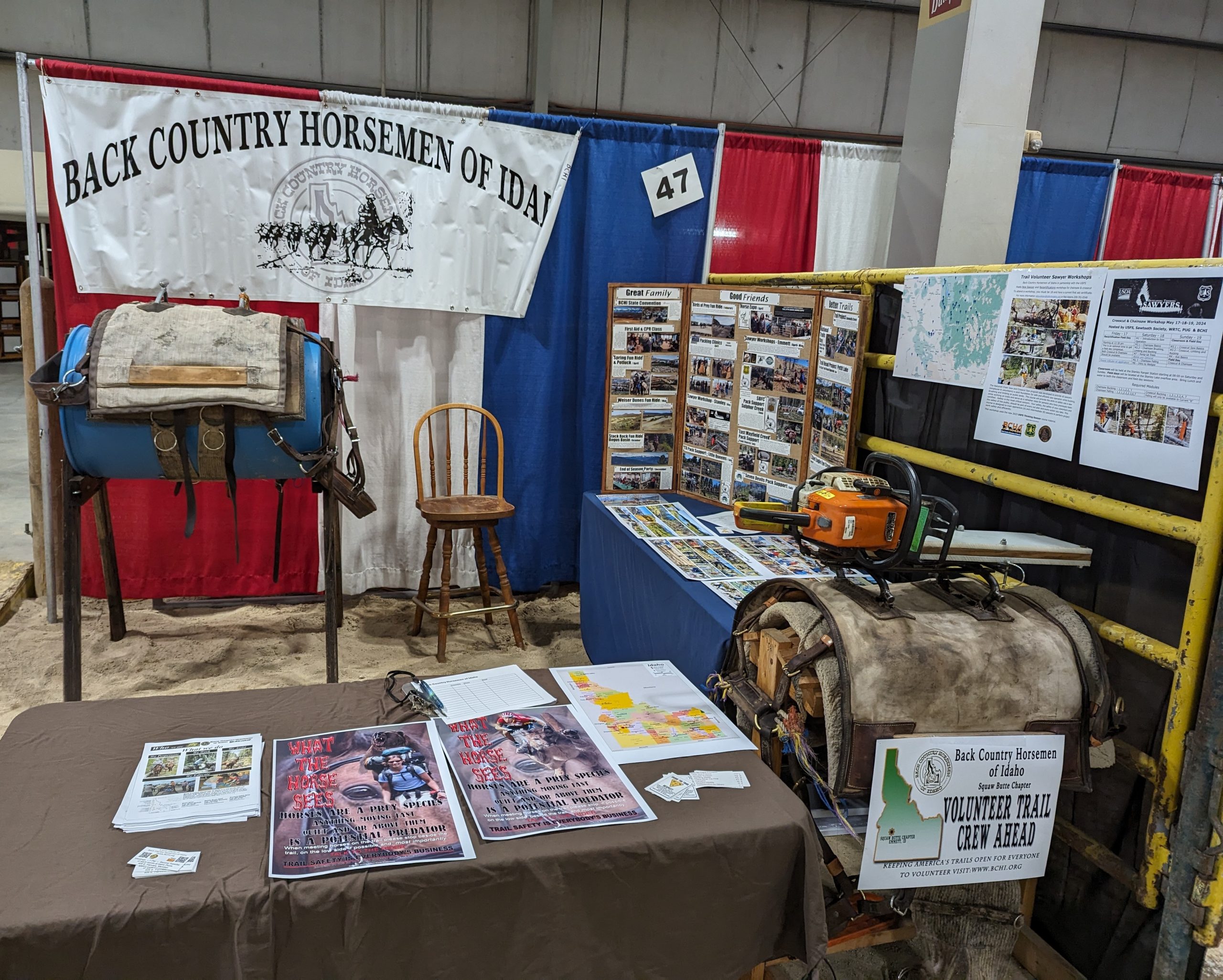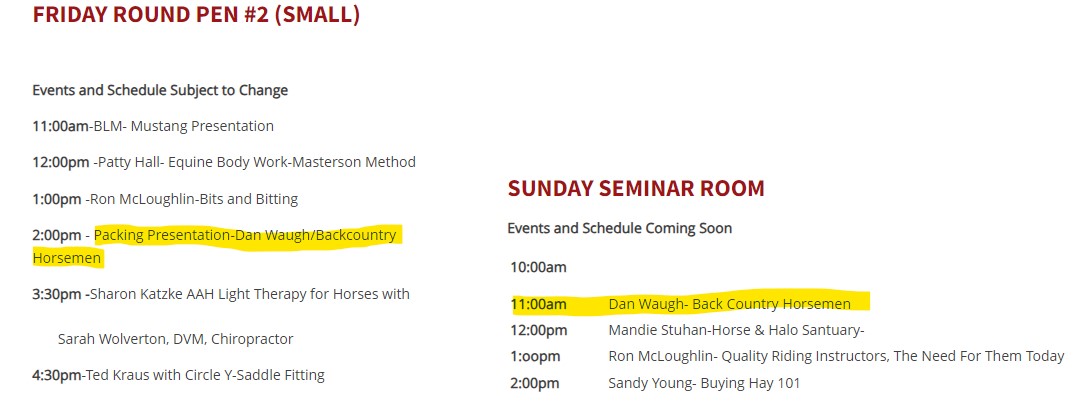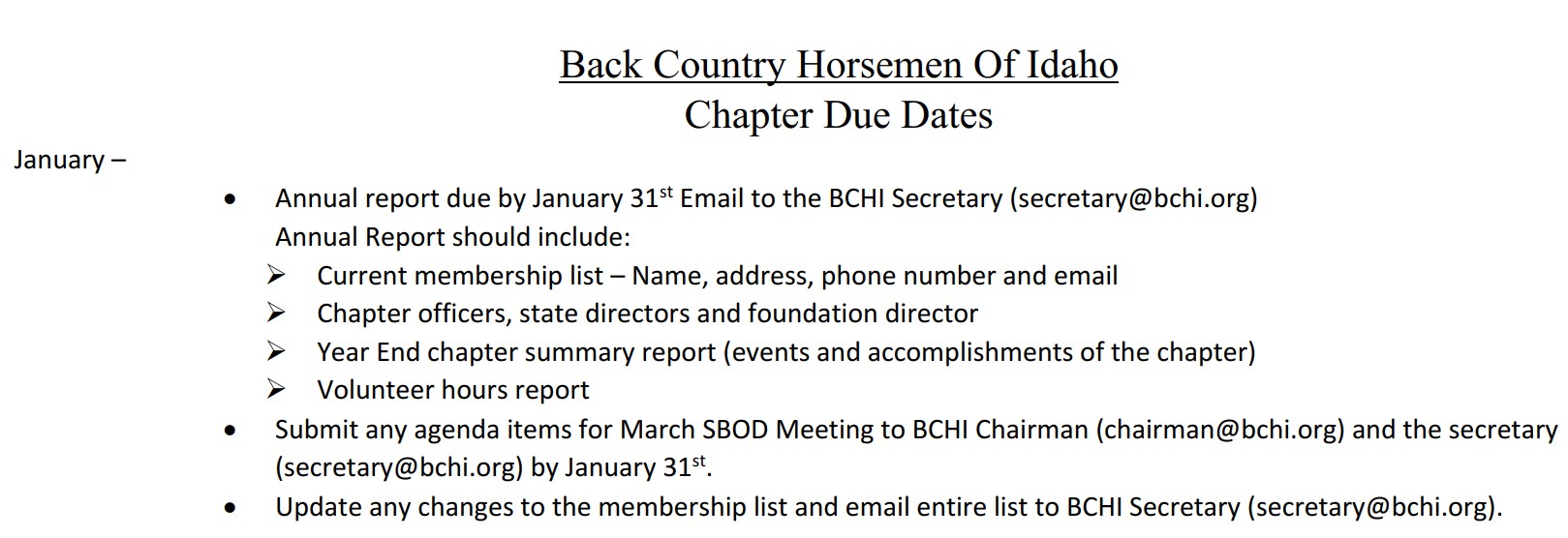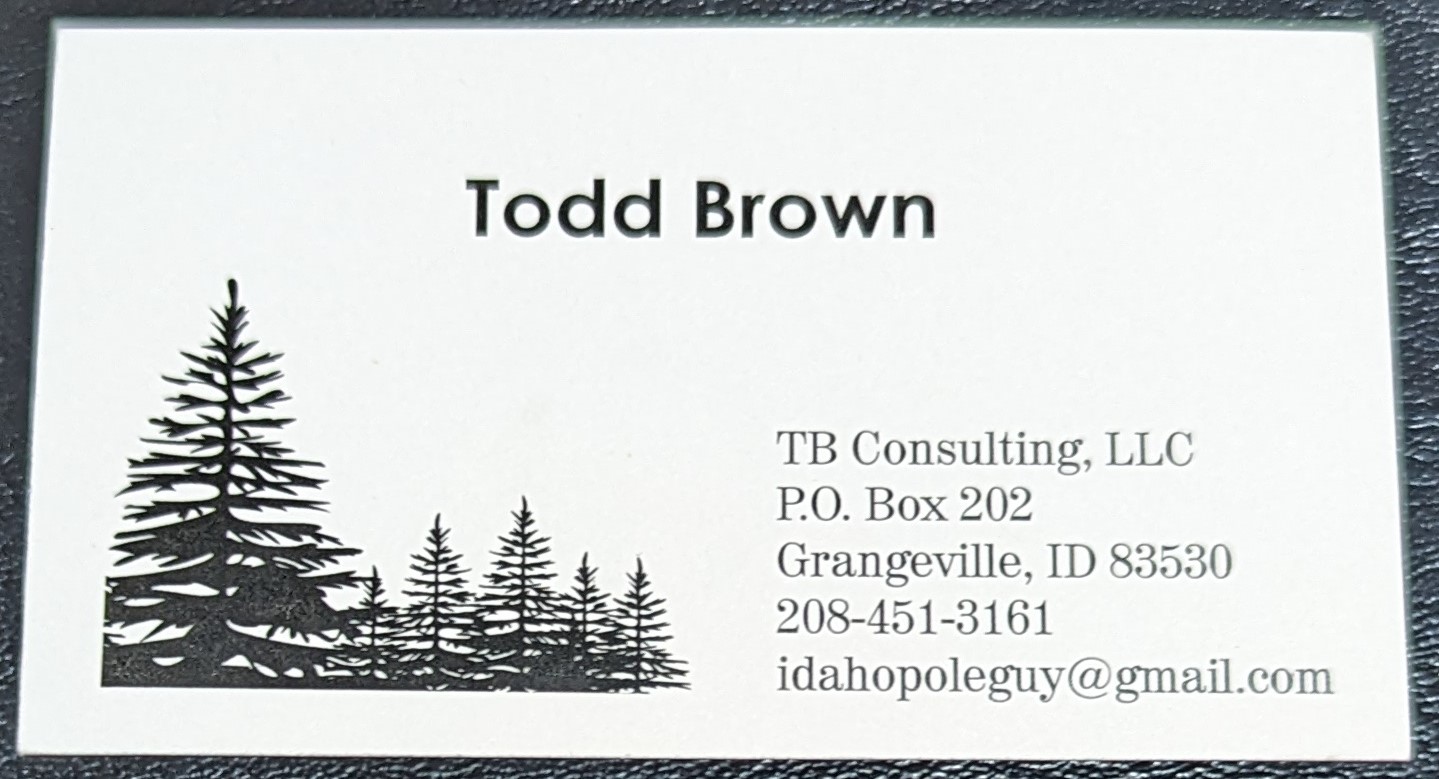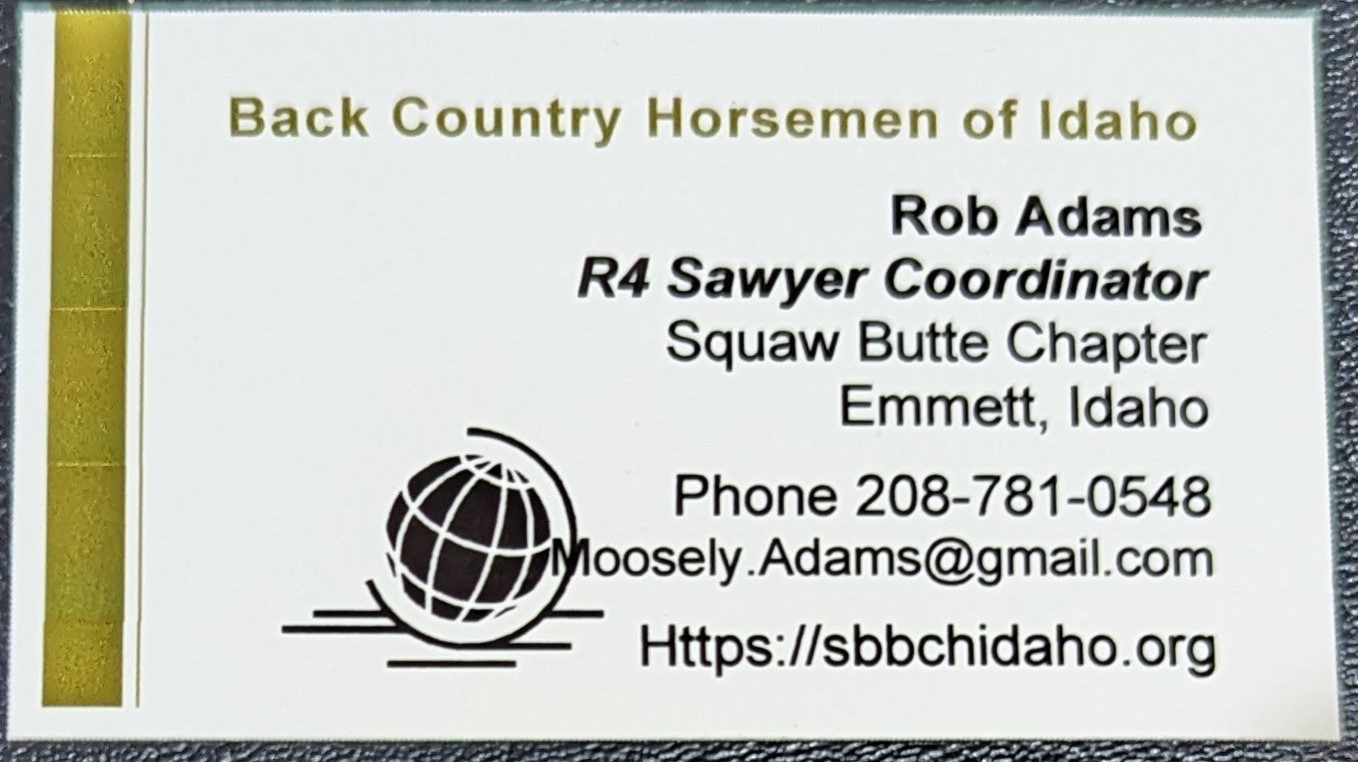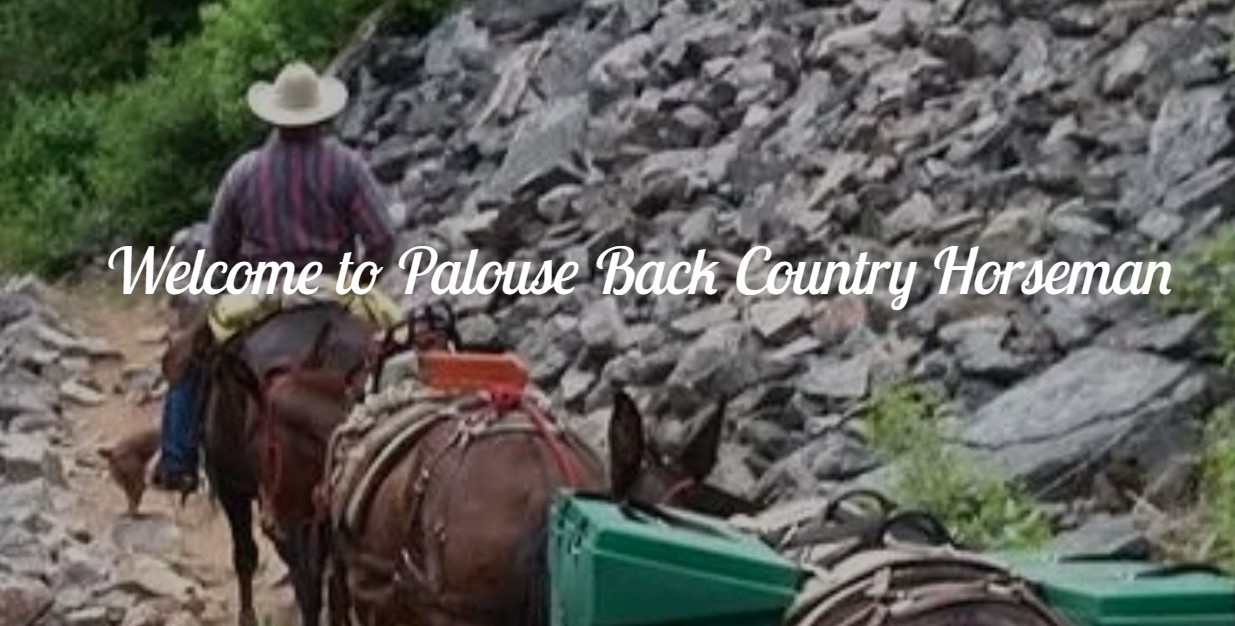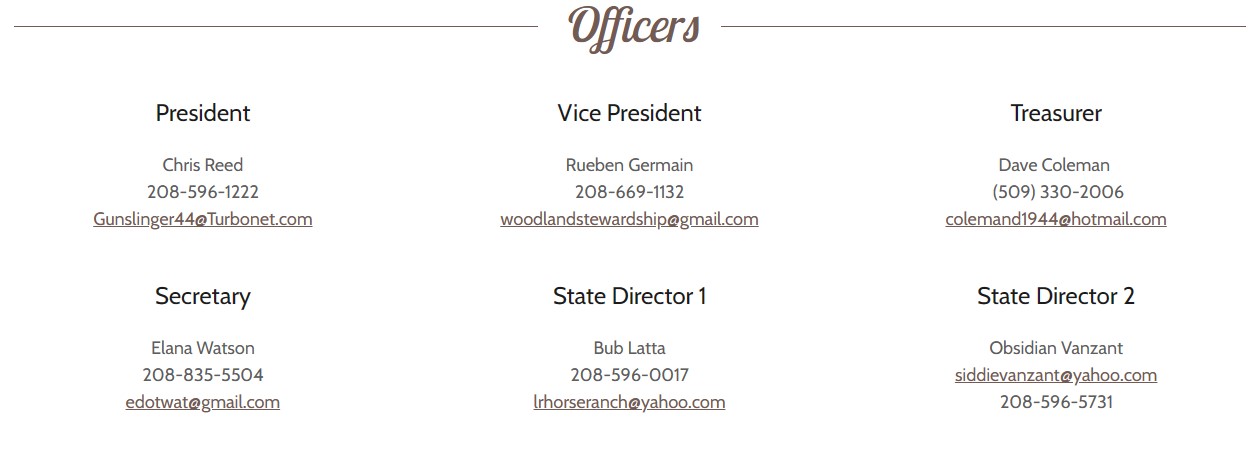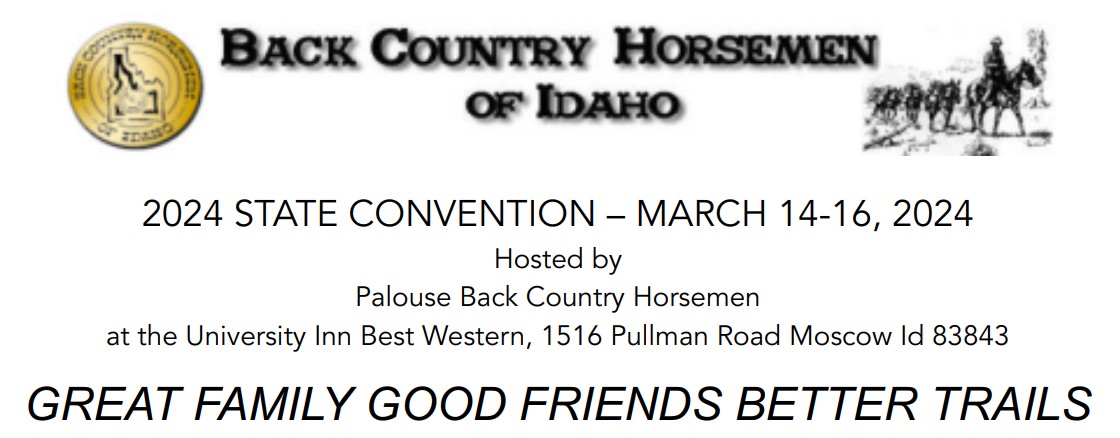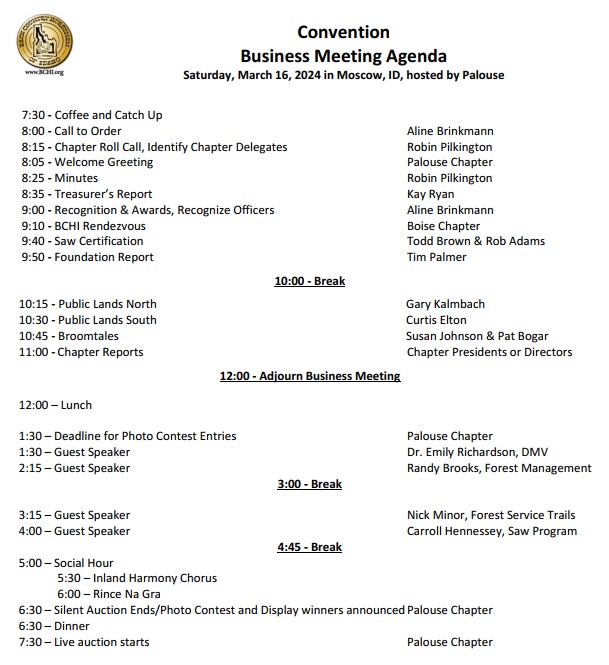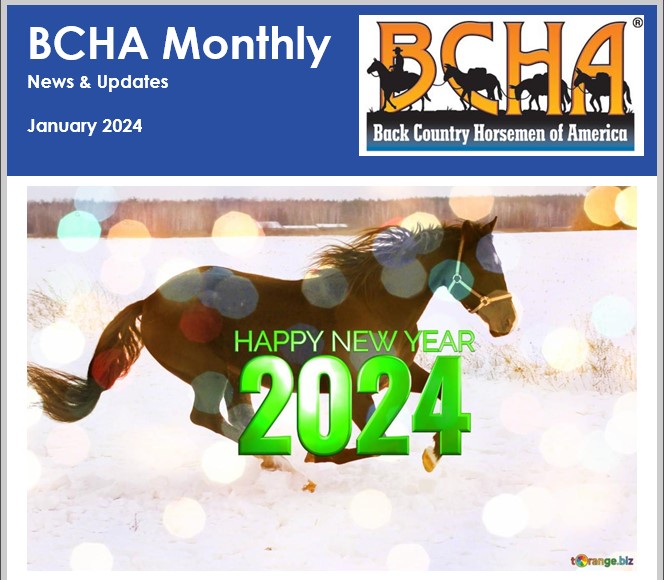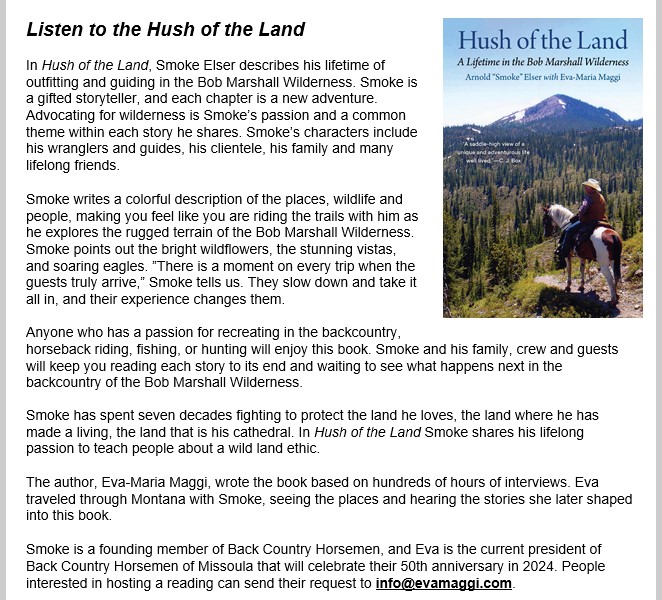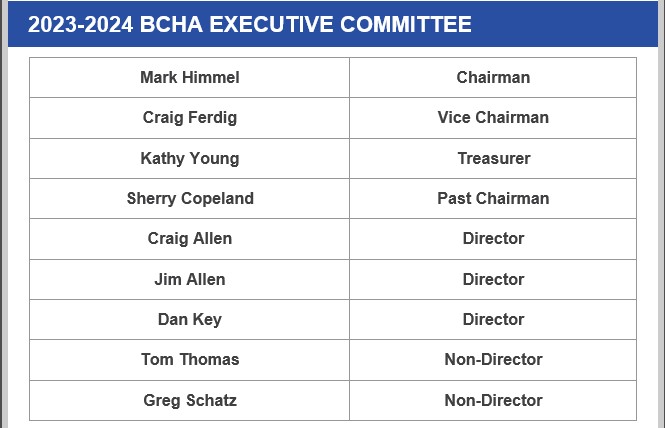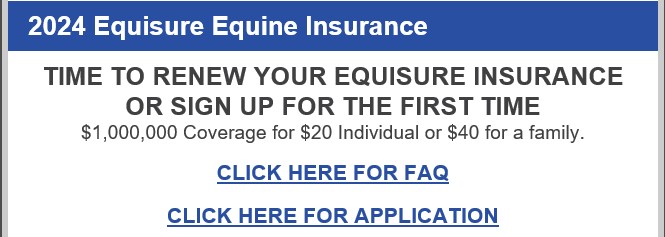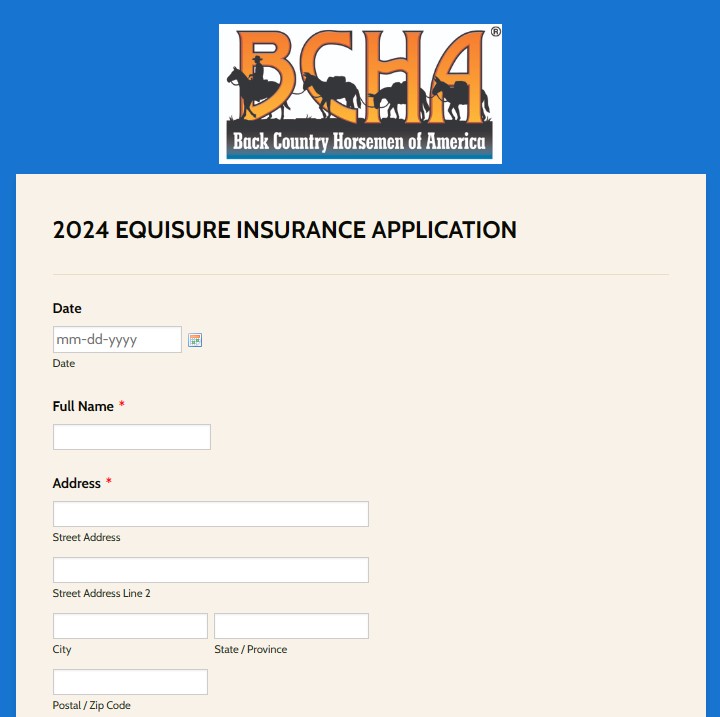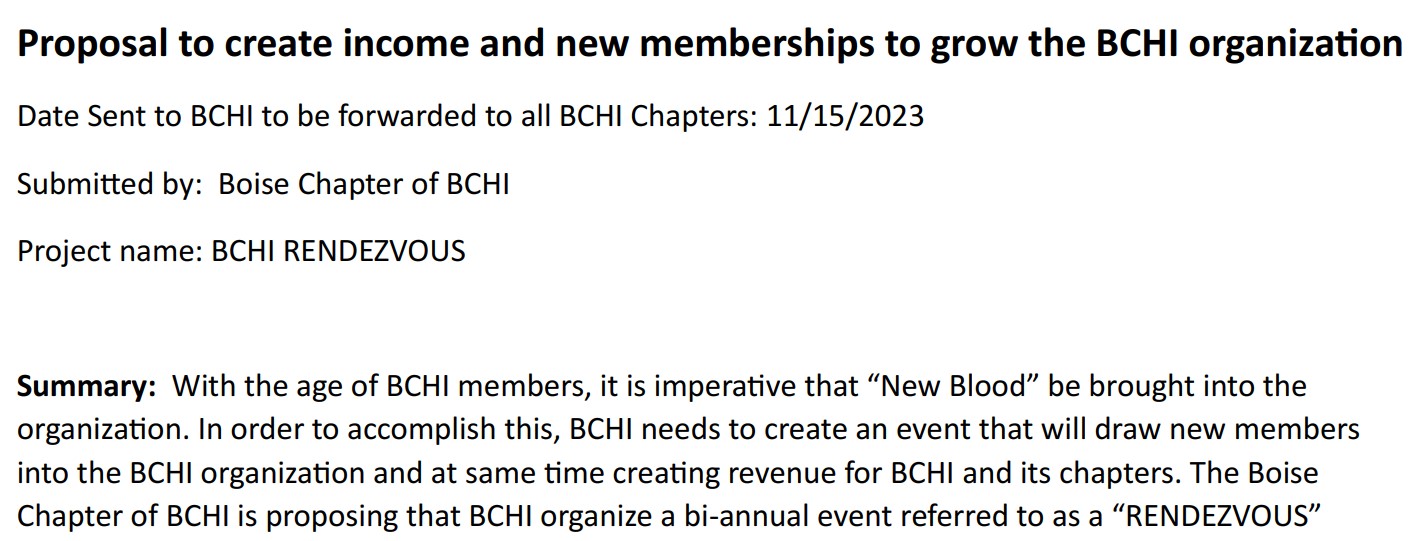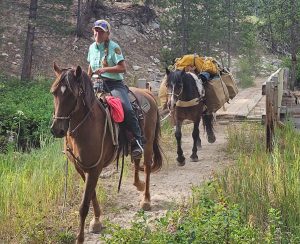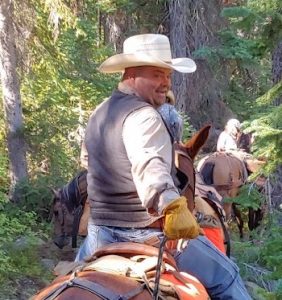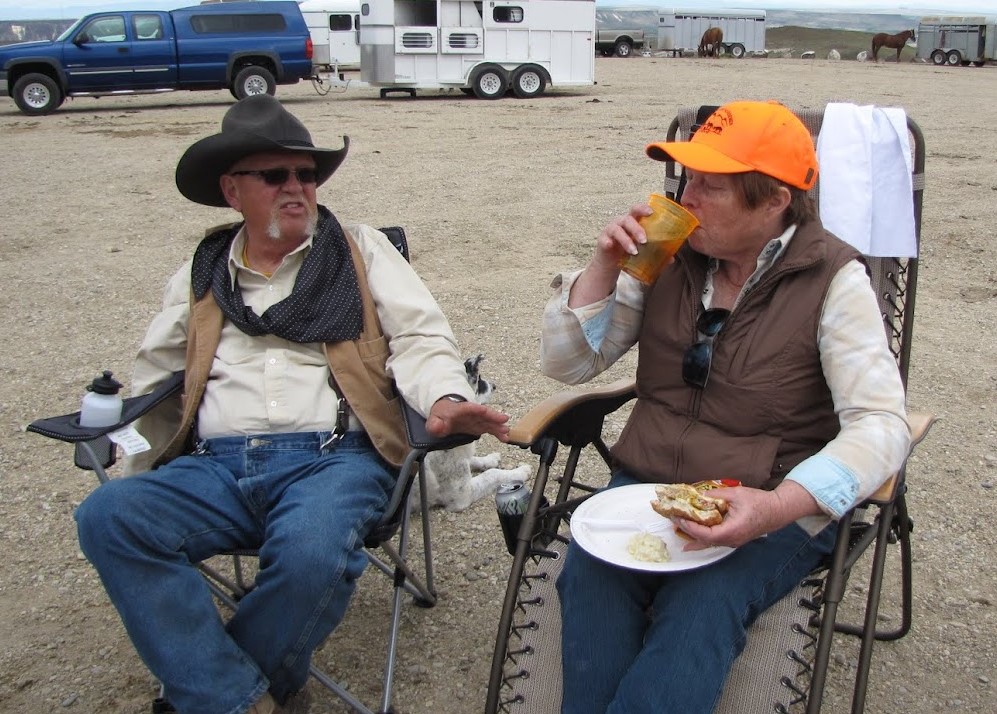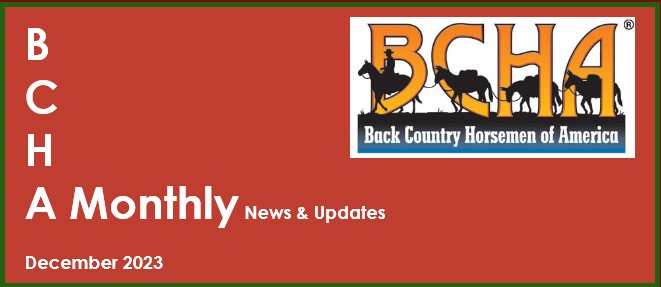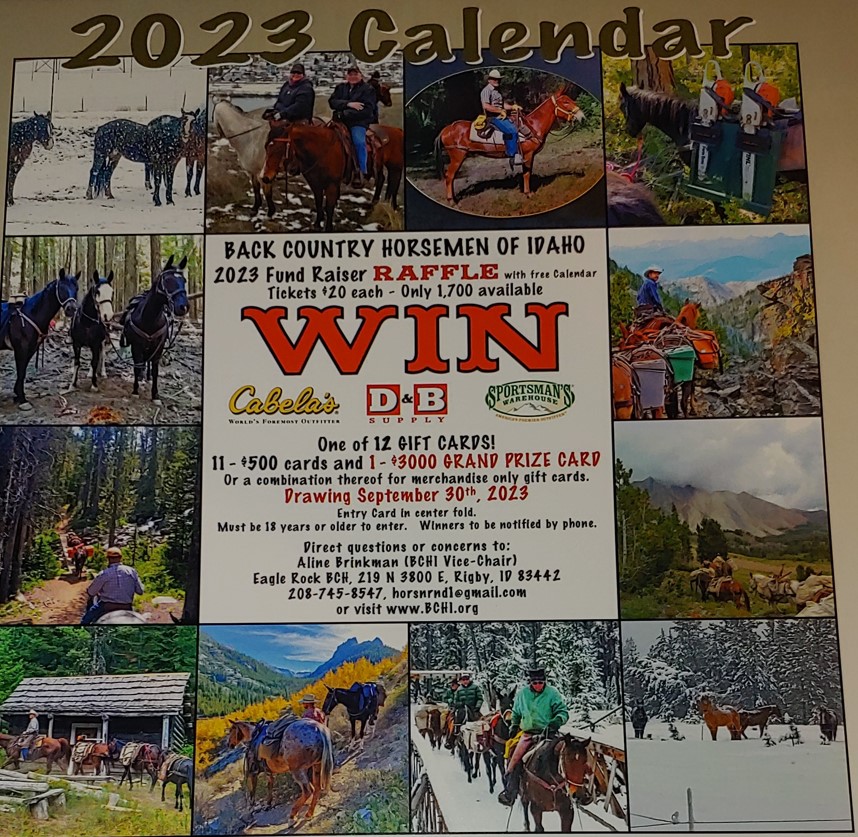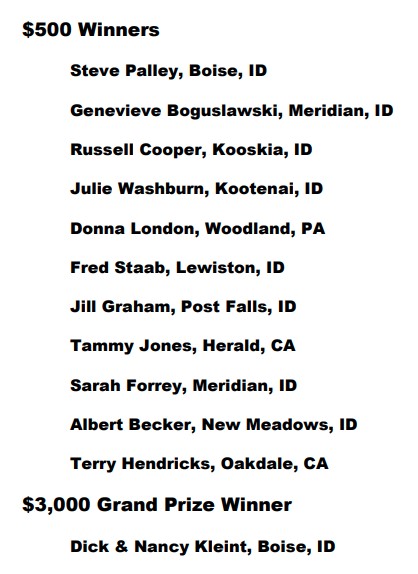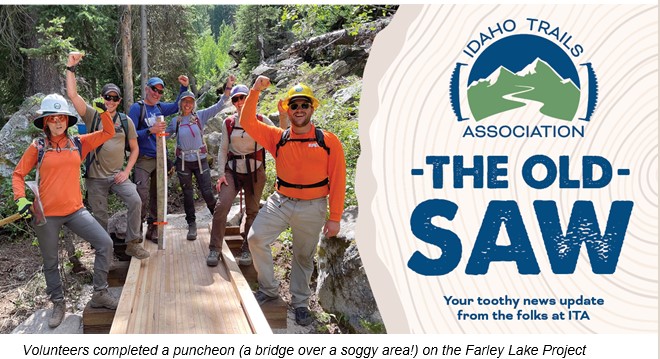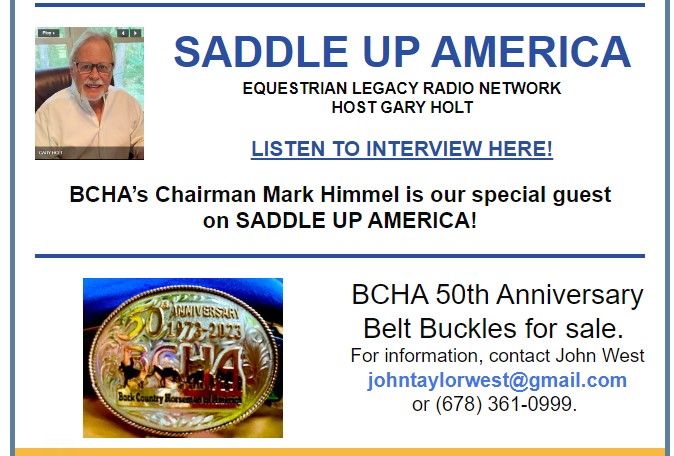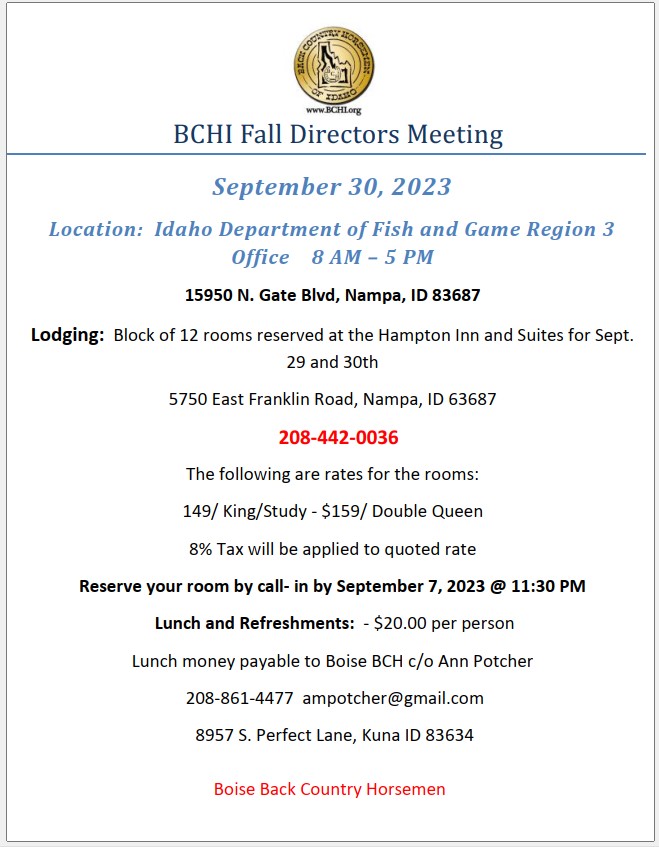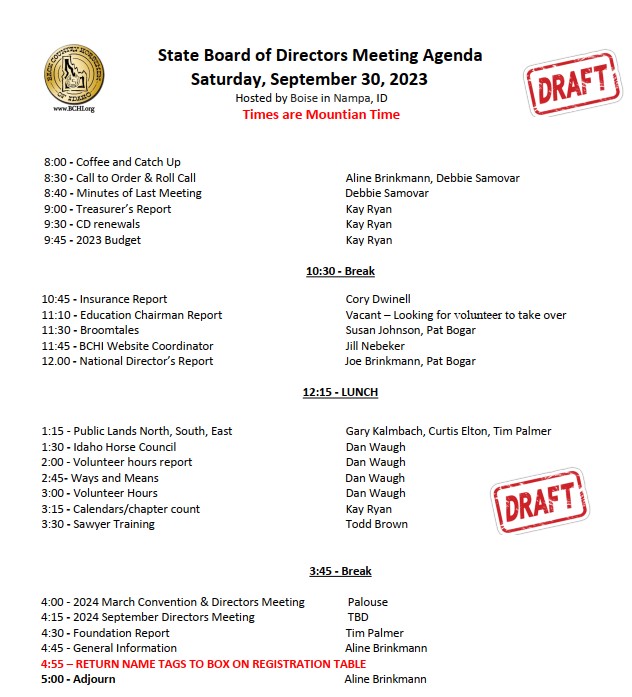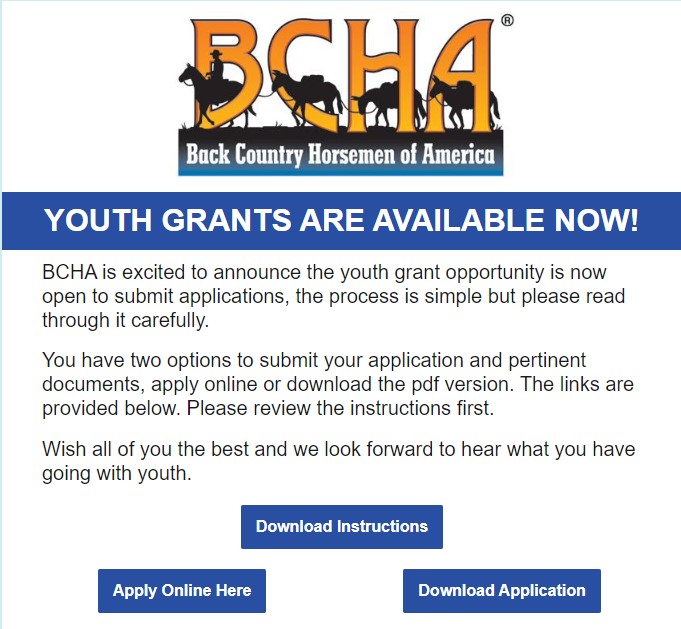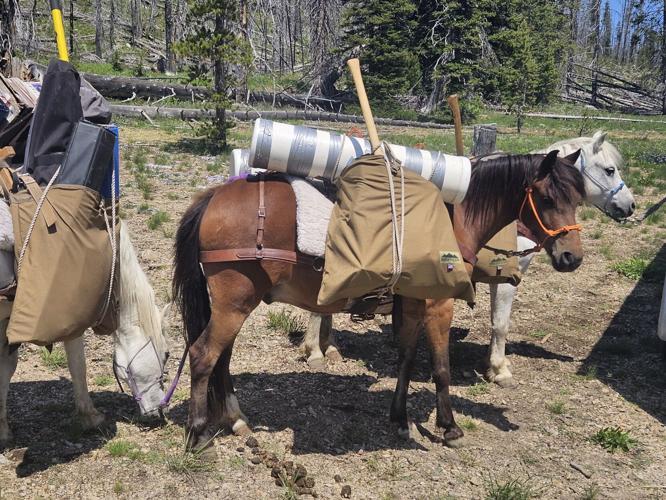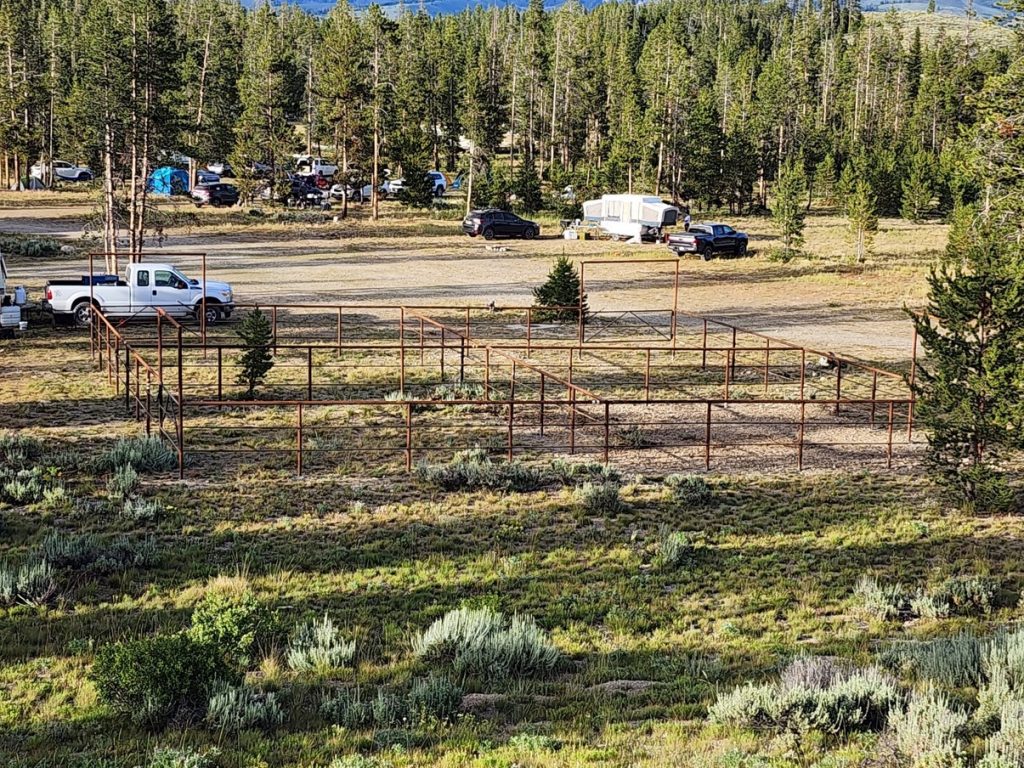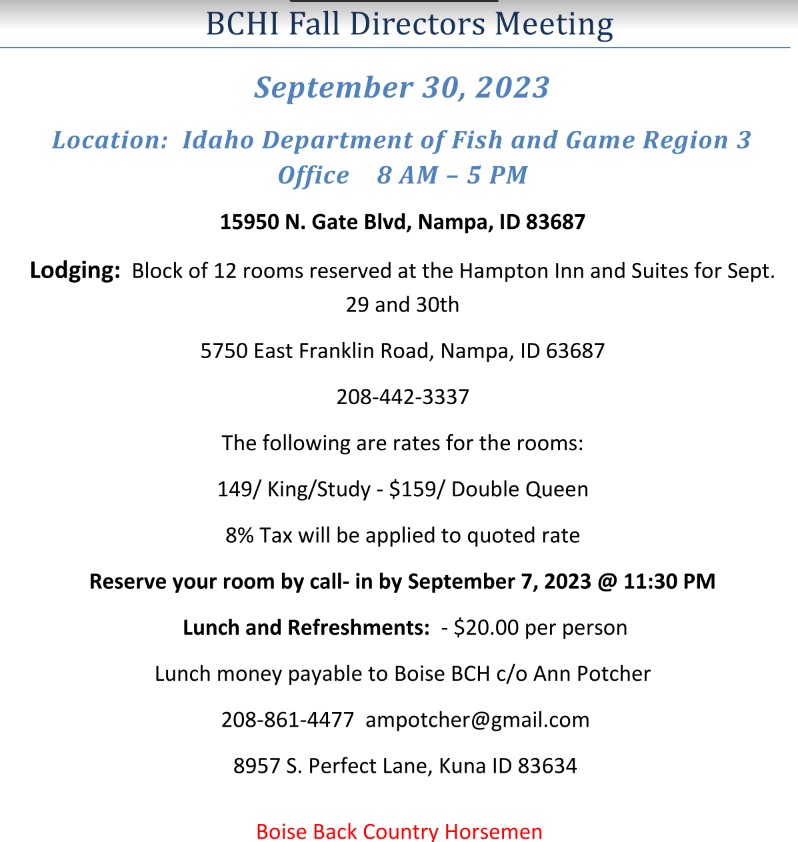The BCHC saw program was the framework that the BCHI saw program was built. They were a great help in getting our program started.
Squaw Butte Photos will be collected by Rob Adams and submitted as a package the last week of November 2025. If you have one you want considered, it must be a JPG and full size off your phone or camera. Email it to moosely.adams@gmail.com with calendar photo in the subject line.
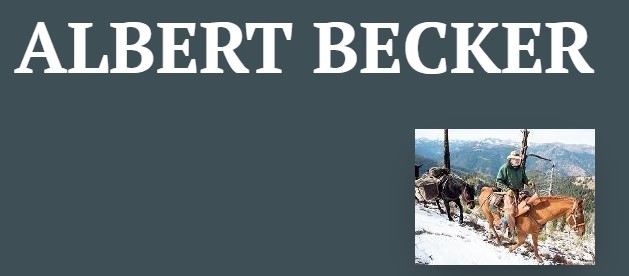 ALBERT BECKER Albert Steven Becker passed away peacefully late in the evening on July 27, 2025. Albert was a remarkable man, a loving father and husband. He was an active member of the community in New Meadows, Council, and McCall, ID. Many of you may have read his letters to the editor in the Star News and Council Record. Albert was born to the Becker Brewery legacy, Frederick Becker and Marjorie (Sissie) Jacobsen in Ogden, UT on August 9th, 1952. He was the youngest of four Becker children with older brother Kurt, and older sisters Frieda and Karen. After the death of their father Frederick at a young age, his mother Sissie remarried Paul Seeger. Albert integrated into a blended family, adding brothers Daryl, Billy, and Kent. Paul and Sissie also brought Tony into the world a few years later.
ALBERT BECKER Albert Steven Becker passed away peacefully late in the evening on July 27, 2025. Albert was a remarkable man, a loving father and husband. He was an active member of the community in New Meadows, Council, and McCall, ID. Many of you may have read his letters to the editor in the Star News and Council Record. Albert was born to the Becker Brewery legacy, Frederick Becker and Marjorie (Sissie) Jacobsen in Ogden, UT on August 9th, 1952. He was the youngest of four Becker children with older brother Kurt, and older sisters Frieda and Karen. After the death of their father Frederick at a young age, his mother Sissie remarried Paul Seeger. Albert integrated into a blended family, adding brothers Daryl, Billy, and Kent. Paul and Sissie also brought Tony into the world a few years later.
The family relocated to Layton, UT where they emphasized the beauties and pleasures that their hard work provided at their historic Sleepy Springs homestead. His sister Karen’s thoroughbred “Sheba” started his life-long love of horses, and he sold chicken eggs to buy his first horse. He loved horseback riding on the national forest lands that bordered Sleepy Springs with his brothers and sisters. He and his brother Kurt used to race their horses bareback on the FS firebreak roads. After graduating from Layton High school Albert attended Utah State University in Logan, UT graduating in 1975 with a Degree in Range Management and a minor in Watershed Science. He was a member of Sigma Nu fraternity. Albert loved the Sigma Nu brotherhood and Utah State rodeo activities.
Albert began working for the U.S. Forest during the summers with his brother Kurt, starting on the trail crew in Warren, ID in 1970. This was the beginning of his lifelong commitment of caring for the land and serving the people where he built lasting friendships and a remarkable career working on the Payette (twice), Wasatch Cache (twice), and Bridger-Teton National Forests. He was very fond of the Gros Ventre Mountain range.
It was 1975 in Logan, UT when Albert went to scout a place to board his horses. It was there he met the love of his life Holly (by golly) Black. She also had “a really nice horse trailer.” Albert and Holly were married in Sandy, UT in 1977. Albert and Holly enjoyed working and living in Jackson and Evanston, WY, and in 1981, moved to beautiful Meadows Valley to work for the USFS on the Payette National Forest. The family was completed with the addition of sons Brandon (1984) and Steven (1987). The family has called Meadows Valley home for 44 years. Albert was a hard worker, a dreamer, a lover, a visionary, a brother, a husband, a father, a grandfather, a poet, a cowboy and a valued member of his community.
Al had a genuine soul. He loved his family, his friends, his neighbors, and good horses. He enjoyed finding common ground with others and seeking sustainable solutions for his community and society. Albert often said, “there is nothing better than riding a good horse in good country”. That was likely Albert’s happiest place; on the back of a good horse riding in the mountains of Idaho, Wyoming, and Utah.
Albert faced many challenges in life including a traumatic brain injury sustained while fighting a wildfire in the Salmon River breaks. This injury nearly ended his life in 1985 but he persevered. He was optimistic in action and thought and he always found a way to achieve what he set his mind to. Even when mounting a horse became challenging, he practiced in his stable. He rode and packed stock in the mountains with his many friends, and he packed into hunting camp for the annual hunt with his family and closest friends every year. He always looked forward to hunting camp and loved to speculate where he may find a “big mature bull this year”.
Albert will be greatly missed. His family would argue there aren’t many better people in this world than Albert. His loss leaves a big hole that will not easily be filled. He is survived by his brothers Kurt and Tony, sisters Karen and Frieda, wife Holly, sons Steven and Brandon, daughter-in-law Stephany, grandchildren Blaize and Pepper, and a world of friends that he respected and adored. Albert’s celebration of life will be held at his and Holly’s White Tail Ridge arena on September 20th. More details to follow. We appreciate all of your kind words and thoughtfulness. See you down the trail, Al. Albert greatly appreciated these organizations if you would like to donate: Trust for Public Lands National Forest Foundation National Public Radio Population Connection Or a charity of your choice. Photo credit: Kristen Binder
October 26, 1939 – May 25, 2025
Emmett, Idaho – Dale Edward Forrester passed away at home May 25, 2025 in Emmett, Idaho at age 85 surrounded by family.
Dale was born on October 26, 1939 in Riceville, Tennessee to Robert and Grace Forrester. He was the youngest of nine children. At the age of 8, his family moved from Tennessee to Mesa, Idaho where he began a new way of life. Then, in 1954, he and his family moved from Mesa to Emmett where he attended high school. In his junior year he joined the National Guard. He then graduated in 1957. Two years later in 1961, he was placed on active duty orders during the Berlin Crisis to Ft. Lewis, Washington. Before leaving, he married the love of his life for 63 years, Linda Gates. After serving a year at Ft. Lewis, Dale and Linda moved to Richland, Washington where they had two wonderful sons, Neal and Don.
In 1969 Dale and his family returned to Idaho. Dale went to work for the Boise Fire Department in 1970 where he made many lifelong friends in his 25 year career. He achieved the rank of captain where he was well liked and highly respected by his crew.
Anyone who knew Dale was aware of his love for the outdoors. Archery was his main passion, and he was instrumental in promoting organized archery in the area. In 1972 Dale and Linda opened D & L Archery which they owned and operated for 8 years. During these 8 years, they shared their knowledge and enthusiasm of archery with multitudes of people, and he with several friends started Treasure Valley Bowhunters. Then in 1973 he spearheaded the start of the Idaho State Bowhunters. He passed his love for hunting and archery down to his family where they spent many years pursuing this passion.
In his later years fishing became his favorite pastime. Brownlee Reservoir and Cascade Lake were some of his favorite fishing spots.
Dale was preceded in death by his mother and father, Robert and Grace; his brothers, Vern, John, Kyle, Norman and Taylor; his sisters, Margaret, Mary Lee, and Elizabeth Ann.
Dale is survived by his wife, Linda; children, Neal (Shannon) Forrester and Don (Rochelle) Forrester; grandchildren, Dylan (Sami) Forrester, Taylor Forrester (Kaleigh Gomez), Bryce Forrester; great-grandchildren, Hayden and Larson Forrester
Dale was well known for his quick wit and sarcastic sense of humor. He loved a good practical joke. He influenced the lives of so many people while passing on his excitement for the outdoors. He loved his family dearly and he will be deeply missed.
Services will be held at Potter Funeral Chapel on Monday, June 2, 2025 with a viewing at 12 p.m. and a funeral service at 1 p.m. Burial will follow at the Emmett Cemetery.
We recommend these Trauma Kit to sawyers taking the “Developing the Thinking Sawyer” certification classes. They are to be worn on the sawyers body and not stashed in their truck, because if you need them it seconds that make the difference. They are also great for horsemen attached to their saddles.

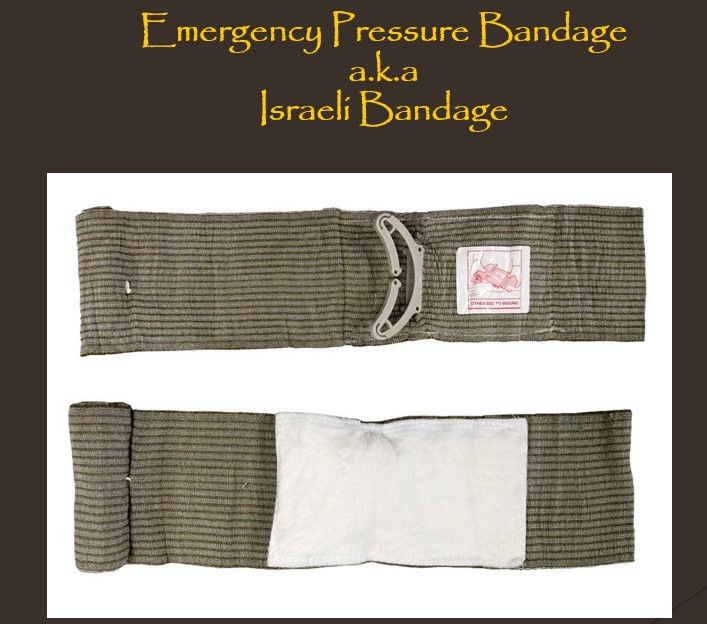 Amazon have Trauma kits available, a couple of the ones we recommend are:
Amazon have Trauma kits available, a couple of the ones we recommend are:









Kay Ryan
- Treasurer of Back Country Horsemen for many years (2009 – 2024)
- Lead the effort to bring the organization into the black financially
- Managed the state calendar program & prizes.
- Developed guides and checklist for board meetings and conventions
- Work at the BCHI booth at the Idaho Sportsman Show & Idaho Horse Expo
- Keep the BCHI board meetings on track!
- Supported BCHI & our chapter with thousands of hours of work
Phil Ryan
-
- Chairman of Back Country Horsemen of Idaho (2009-2010)
- Vice Chairman of BCHI (2008)
- BCHI Public Lands Idaho Region 4 (at least 10 years)
- BCHI Board Member for many years
- Created the Chainsaw Trophy for best chapter display
- President of Squaw Butte Chapter multiple times
- Member of the Idaho Recreation Council
- Member of the Idaho Horse Council
- Go to person on Equine Issues of Public lands for Idaho Governor’s Office
- Member of the Frank Church Wilderness Coalition
- Member of the Owyhee Initiative Board
- Serviced on boards and committees for IDPR
- Tireless advocate for stock use on public lands
- Stock Packing Instructor
- Worked on numerous pack support projects for other volunteer groups
- Staunch advocate for Idaho’s Public Lands
Hello,
First, Happy Thanksgiving to everyone! I have been contemplating how I can be of assistance to all of you, since all of you are well seasoned, experienced backcountry horsemen. So, I thought one of the main challenges we all have in BCH nationwide is low membership. Do you think this could be one of our “missions” as education chairmen is finding an avenue to share the extensive knowledge BCH chapters have with the public, showing them what we do and who we are? Possibly, this opportunity may encourage them to join our organization or at least educate them with how to use the backcountry responsibly.
I am sure many of you have conducted public events, I would love to hear about your programs and how was the response. Do you feel this would be a good avenue to pursue or possibly you may have other suggestions?
Also included in this email the new Light on the Land BCHA education publication from the BCHA website and thought it may be of interest to you.
Appreciate you taking the time to reply to my questions and offer any suggestions.
Sincerely,
Karen Bailey Education Chair education@bchi.org
2024 Raffle winners:
$500 winners:
1. Karen French, Salmon, ID 83467
2. Barb Recla, Meridian, ID 83642
3. Elizabeth Walker, Athol, ID 83801
4. Panhandle BCH, Hayden ID 83835
5. Cini Baumhoff, Boise, ID 83713
6. Ron Beitelspacher, Grangeville, ID 83530
7. Donald B Kleint, Donnelly, ID 83615
8. Kathy Fritschle, Donnelly, ID 83615
9. Portneuf River BCH, Pocatello, ID 83204
10. Kimberly Bartholomew, Kamiah, ID 83536
11. Cindy Worth, Grangeville, ID 83530
$3,000 winner:
12. Mary Ann Shaff, Heyburn, ID 83336
Treasure Valley BCH Hosting 2025 State Convention
March 14-15, 2025
BOD Meeting Friday March 14 @
Best Western Plus Inn & Suites 908 Specht Ave Caldwell Idaho 83605 Phone: 208-454-7225 their email: bwpcaldwell@gmail.com
Group Rate “BCHI” @ $125/night -must reserve by February 19, 2025.
Saturday March 15 Convention Location is a mile from the Best Western at the Canyon County Fair Event Center 110 County Fair Ave Caldwell.
More info contact TVBCH bchiconvention@bchi.org
Kathy 208-830-9504
The U.S. Forest Service has not yet approved a plan to allow electric bicycles (e-bikes) on trails in the Lake Tahoe Basin, contrary to earlier reports. The Lake Tahoe Basin Management Unit (LTBMU) is still in the process of evaluating a proposal that could potentially open up more than 100 miles of trails to e-bikes.
The Basin Wide Trails Analysis Project, which includes the e-bike proposal, is currently undergoing environmental assessment. The Forest Service expects to release the Final Environmental Assessment and a Draft Decision Notice in late August 2024. This will be followed by a 45-day administrative review period for those who have previously commented on the project and have standing to object.
If approved, the plan would allow Class I e-bikes, which are pedal-assisted and can reach speeds up to 20 mph, on designated trails. The proposal also includes the potential construction of new routes and upgrades to existing infrastructure.
The LTBMU received 660 comment letters during the public comment period in September 2023 and has been working to update the Environmental Assessment based on this feedback. The agency is also completing a required formal consultation with the U.S. Fish and Wildlife Service.
Currently, e-bike use is only permitted on National Forest roads and trails in the Tahoe Basin that are designated for motor vehicle use, in accordance with the Forest Service’s Travel Management Rule.
A final decision on the project is estimated to be released in November 2024. This timeline reflects the complex nature of the proposal and the Forest Service’s commitment to thorough environmental assessment and public engagement in the decision-making process.
https://www.fs.usda.gov/detail/ltbmu/news-events/?cid=FSEPRD1192762
READ Full List: Due Dates for Chapters
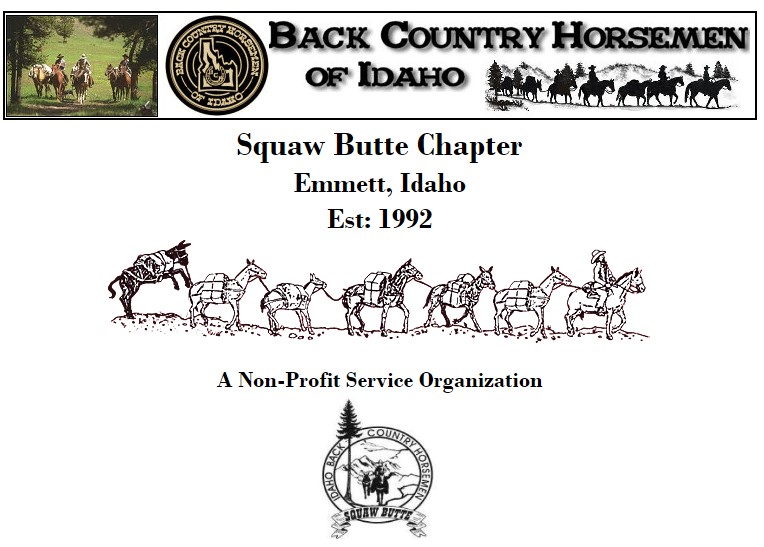
 READ Complete report: 2023 YEAR IN REVIEW
READ Complete report: 2023 YEAR IN REVIEW
Note: as proposed in the following PDF, this idea as outlined is in violation of Idaho Law because it involves paying for services on public lands which is illegal’s unless you are a licensed “Outfitter & Guide” which BCHI is not. It would also likely provoke a civil suite from the Outfitters & Guides Association.
Proposal to create income and new memberships to grow the BCHI organization
Sunday January 7, 2024 @ 15:00 (3 PM)
Join the team helping to pick next years calendar pictures lead by Marjaliisa & Dan Waugh
Topic: IHC Trails BCHI Calendar Meeting
Time: Jan 7, 2024 03:00 PM Mountain Time (US and Canada)
Join Zoom Meeting
https://us02web.zoom.us/j/89722040707?pwd=bURVRTdKNVM5YU9BSTZWb2Nza3paZz09
Meeting ID: 897 2204 0707
Passcode: 765217
—
One tap mobile
+17193594580,,89722040707#,,,,*765217# US
+12532050468,,89722040707#,,,,*765217# US
—
Dial by your location
• +1 719 359 4580 US
• +1 253 205 0468 US
• +1 253 215 8782 US (Tacoma)
• +1 346 248 7799 US (Houston)
• +1 669 444 9171 US
• +1 669 900 9128 US (San Jose)
• +1 646 931 3860 US
• +1 689 278 1000 US
• +1 301 715 8592 US (Washington DC)
• +1 305 224 1968 US
• +1 309 205 3325 US
• +1 312 626 6799 US (Chicago)
• +1 360 209 5623 US
• +1 386 347 5053 US
• +1 507 473 4847 US
• +1 564 217 2000 US
• +1 646 558 8656 US (New York)
Meeting ID: 897 2204 0707
Passcode: 765217

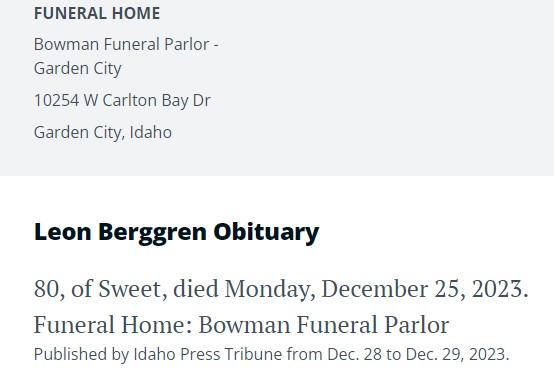

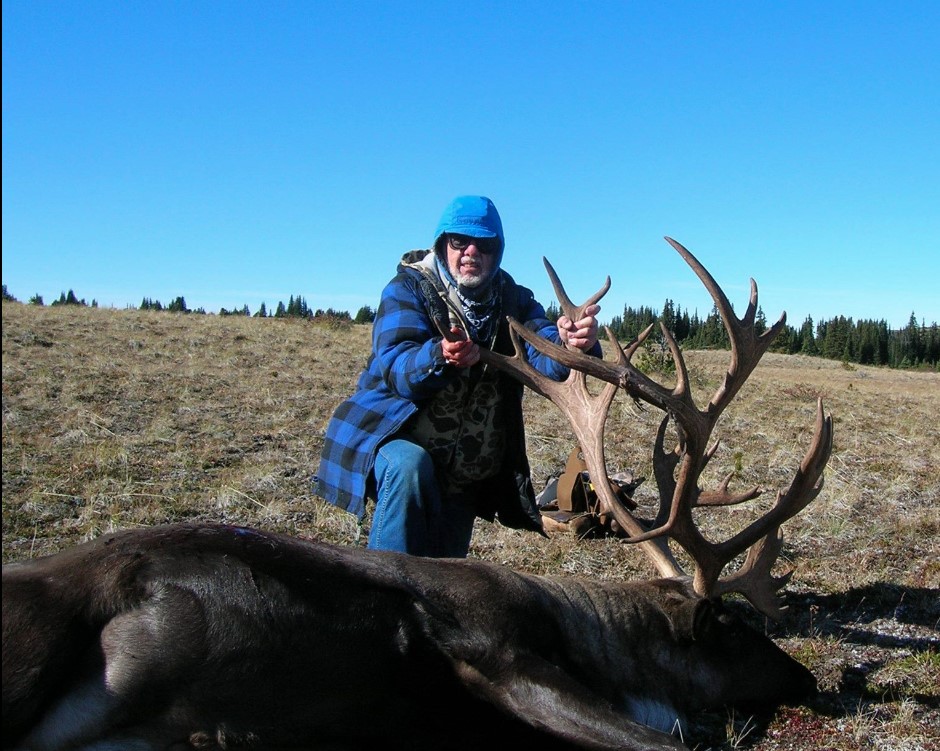
Sweet, Idaho/Price, Utah – Leon E. Berggren, 80, passed away on Christmas Day 2023 in Boise, Idaho. Dad is finally free! Leon was born on February 8, 1943, to Alta Marie and Carl S. Berggren of Imperial Nebraska, he was the second child of three children.
Leon moved around a lot with his family before graduating from Socorro High School. There, he met the love of his life Margaret Scott. They were married on February 2, 1964. Leon went on to New Mexico State University, where he earned his Bachelor of Science Degree in Wild Life Management.
In 1966, Leon and Margaret welcomed a son Scotty, and in 1970, they welcomed another son, Eric. Leon enjoyed spending time with his sons, hunting, fishing, camping, boating, running rivers, and bucking hay, just
to name a few. He was an avid outdoors man.
Leon’s job took him to many states, working in New Mexico, California, Utah, and retiring in Idaho in 1999. Leon loved retirement having cattle of his own in Sweet, Idaho. Leon enjoyed working his cattle with Margaret by his side. There, he had many happy memories with his children and grandchildren, who he loved with his whole heart.
Leon will always be remembered as a BLM man, firefighter, husband, dad, grandpa, papa, and great grandpa. Leon will be dearly missed by his family and many friends.
He is survived by his wife Margaret, son Scott, and wife Stacy, son Eric, and wife Ralynn. Five grandchildren, Carl Russell, Brian (Aspyn) Berggren, Tiffanie Perkins, Cassie (Brady) Moore and Taylor Berggren. Four great grandchildren, Jackson, Gentry, Leah, and Carl Judson. Other surviving relatives include sister Anita Little, and husband Jack, nieces Arlene and Janice along with their families, cousin Walt, and many more cousins. Preceeded in death by his parents Carl S. and Alta Berggren, brother Carl Thomas, grandparents, aunts, uncles, cousins and friends.
Per Leon’s wishes, cremation has taken place by Bowman Funeral Parlor, Garden city. A memorial service/celebration of life will take place at a later date this spring in Sweet, Idaho, with an interment at the Sweet Idaho Cemetery.
Leon & Margaret Berggren
PO 126
Sweet, ID 83670
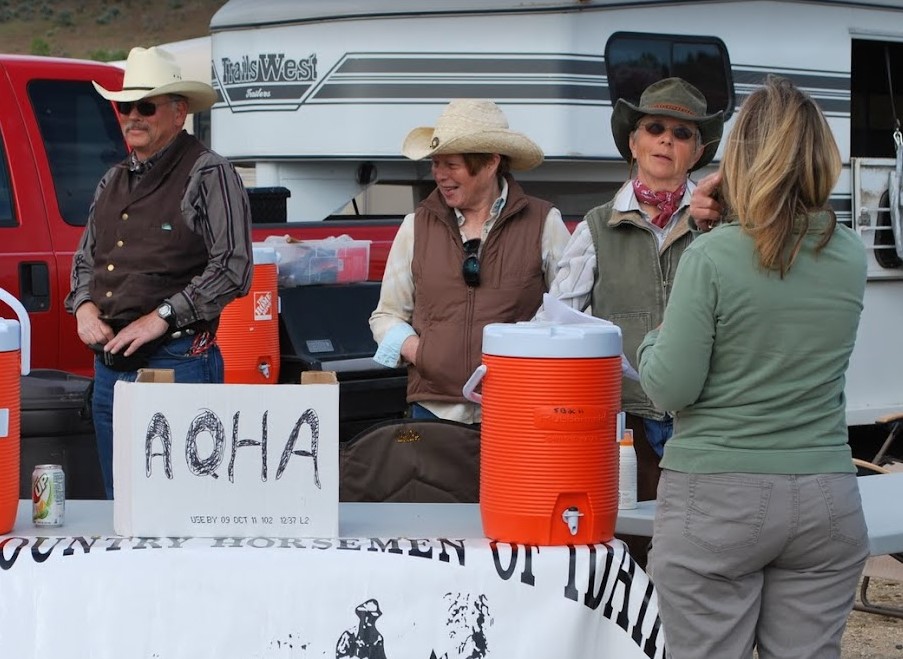
Margaret, Lorraine & Chick at Wilson Creek
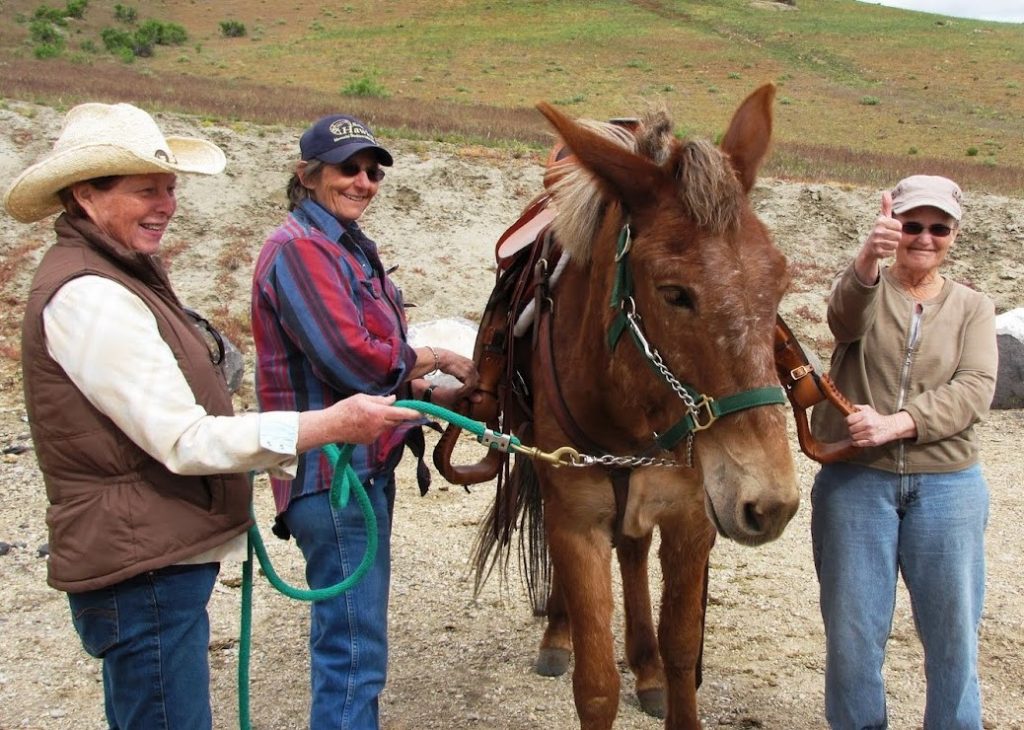
|
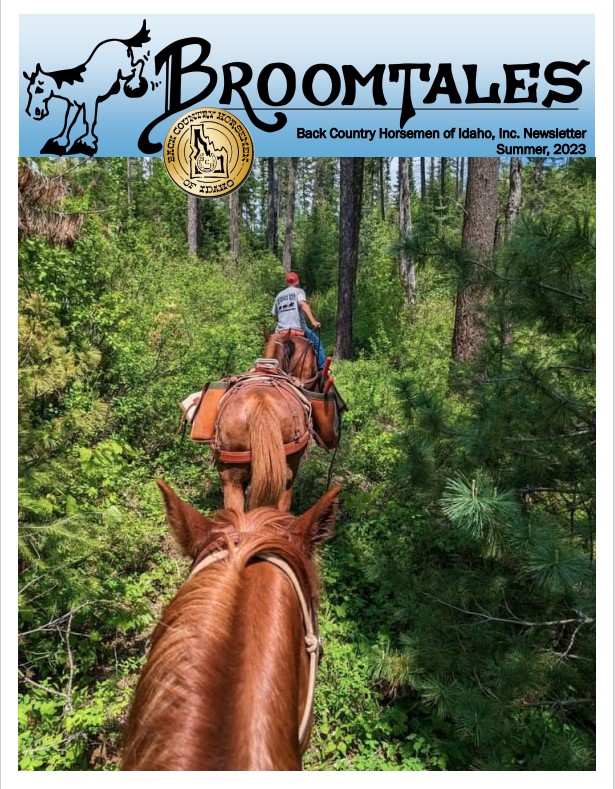 Click to Read
Click to Read
2023 Summer-Broomtales
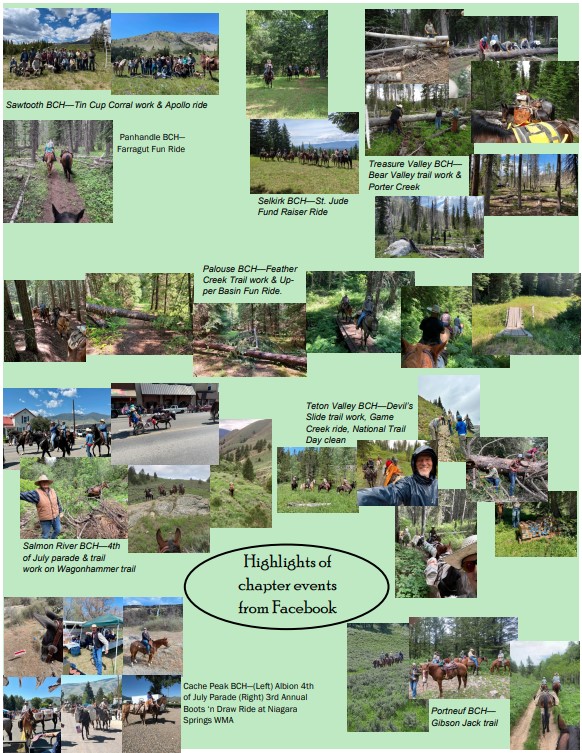
Dan and Marja are Backcountry Horseman of Idaho volunteers who pack gear and supplies for ITA projects as well as other groups doing trail work in the Wilderness. We applaud their enthusiasm for protecting and maintaining Idaho’s trails and volunteering for seven pack trips across Idaho in 2023 alone! For our backcountry projects, their packing services are key to reaching remote places and getting the work done. Projects are always more fun when greeted by Dan and Marja’s smiles, treats at the trailhead, and getting to take selfies with their burro, Pedro!
“Our lands and trails in Idaho, especially non-motorized trails are quickly fading away at an alarming rate. Groups and even state and federal land managers can’t keep pace with maintaining our trails. We have to change our mindset and work with those managers to find unique and new ways to manage resources and improve our trails.”- Dan Waugh
Read their full Volunteer Spotlight here!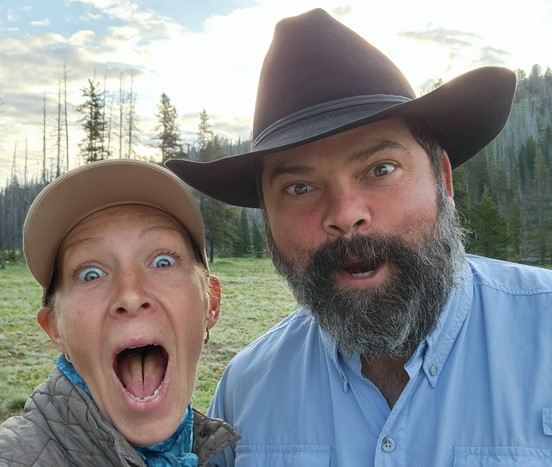
ITA named finalist in national contest!
As our 2023 trail season is slowly winding down, we are full of thanks for our volunteers, members, and supporters who have made this season an awesome one for trails and public lands! We still have a few projects left as well as some great events coming up:
- ITA has been named as one of five nonprofit finalists in the Land Rover Defender Service Awards and has the chance to win a customized Land Rover and $25,000! But we need your help to win. See below for more details.
ITA has been named as one of five nonprofit finalists in the Land Rover Defender Service Awards and has the chance to win a customized Land Rover and $25,000! A large four wheel drive like this would be instrumental in allowing more volunteers (especially youth) to participate in projects requiring a high-clearance vehicle. Transportation to remote trailheads on rough roads has become a challenge as ITA grows and volunteers don’t always have their own four-wheel drive vehicle. Our goal is to make it possible for anyone to be part of a project, no matter how rough the road to the trailhead! The contest winner will be determined by public vote starting this Friday, September 15 and going through October 4 and we need your help to win. You can vote once per day and we need as many people as possible voting every single day! You can opt into this email reminder by clicking the button below or replying “opt in” to this email. Thank you for helping us win this awesome contest.

The Squaw Butte Chapter of Back Country Horseman of Idaho spend a lot of summer weekends doing trail or trailhead work in the mountains, or providing pack support for other volunteer trail crews. In July some members provided the pack support to a trail crew out of the Moscow/Pullman area spending a week cutting trees on trails in the Frank Chuck Wilderness.
Dan Waugh, of the Squaw Butte Chapter was the lead packer for the group and provided the following account of the trip back out of the Wilderness.
“Picked up the Selway Bitterroot Frank Church Foundation trail crew. They did an amazing job clearing over 5 miles and cutting more than 550 trees with a crosscut saw. If you haven’t ran one then you wouldn’t understand the task of this. But 3 crosscut teams can get to work!
The morning of the pack out was cool and wet and came early. Thank goodness for good hot coffee. We had the seven pack animals and two riding horses saddled and ready to go in about an hour. The ride in was great and without issue. The trail was wet so zero dust which is always a blessing. However, the bogs were deeper and sloppier than last week.
Submitted by Lisa Griffith
READ FULL REPORT: Report out on the Tin Cup project


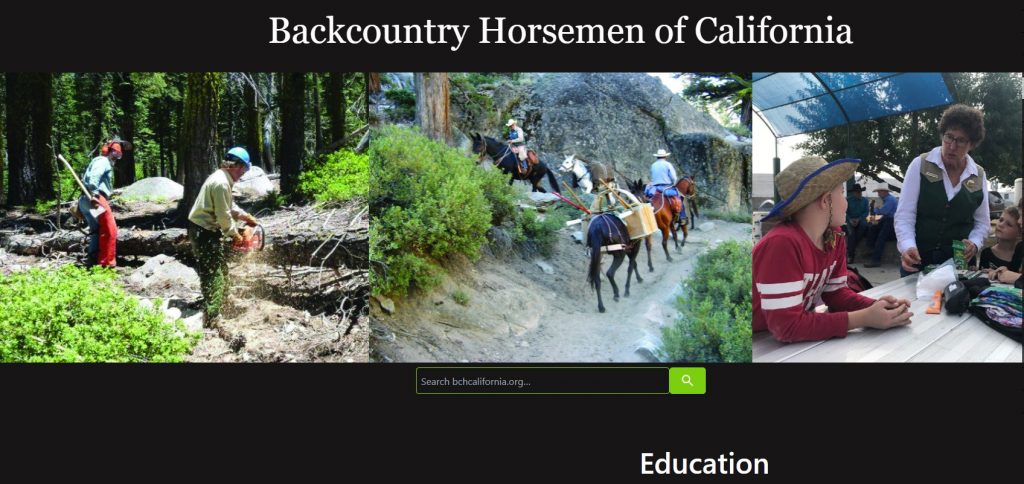
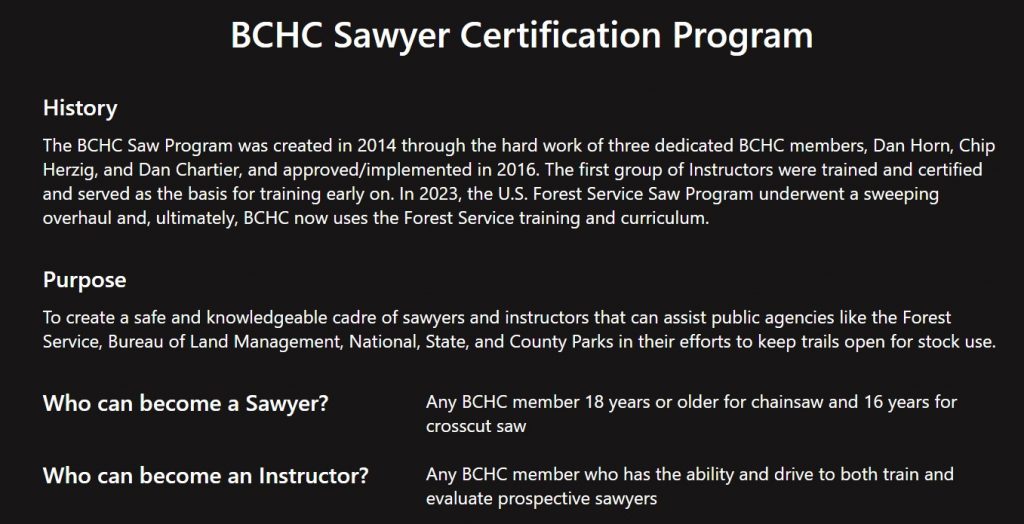
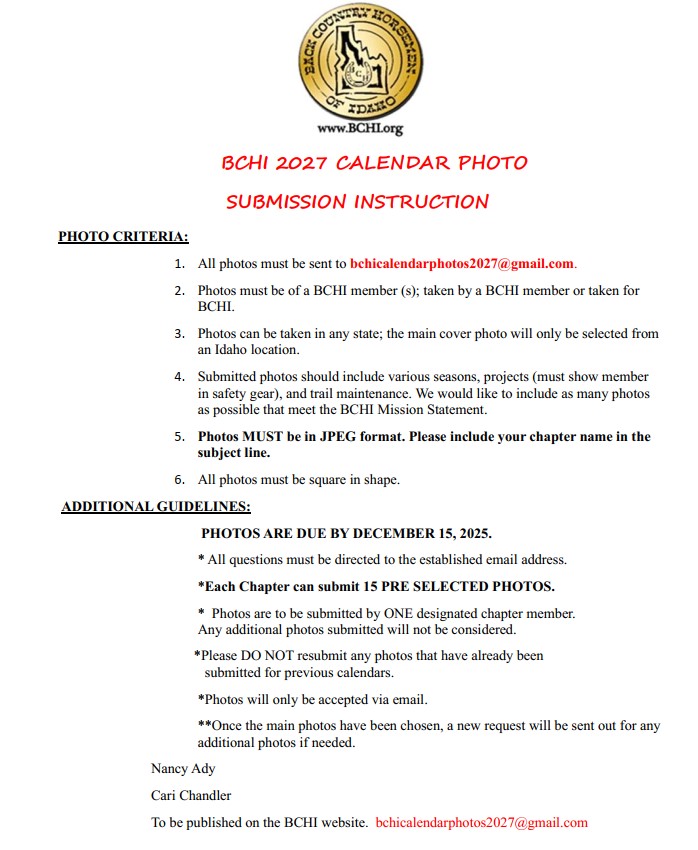
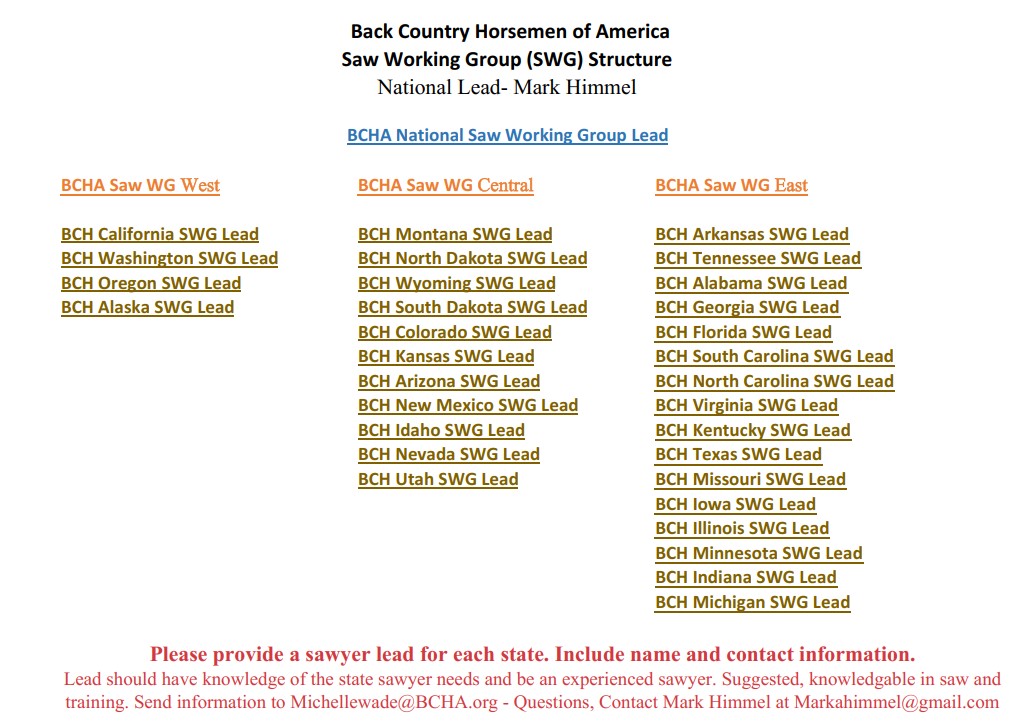








































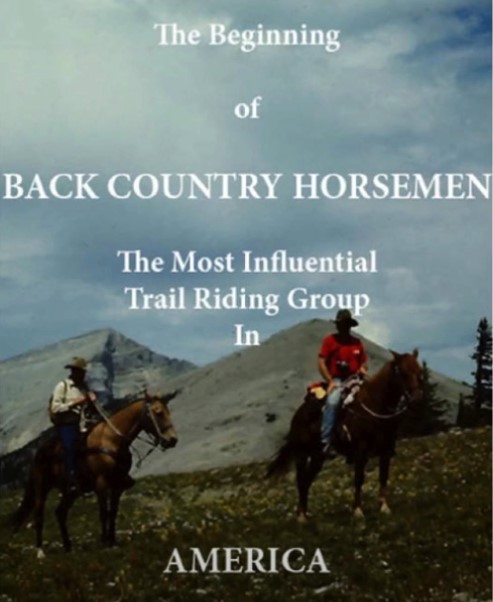
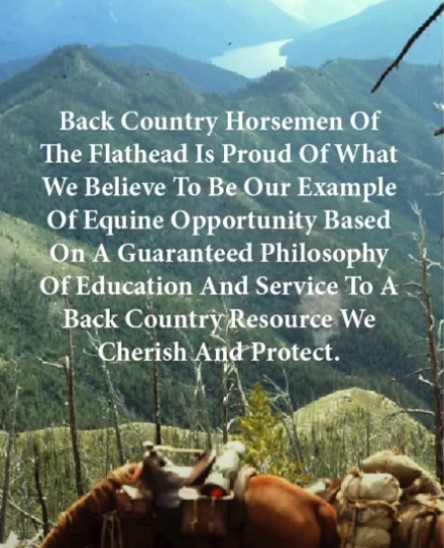
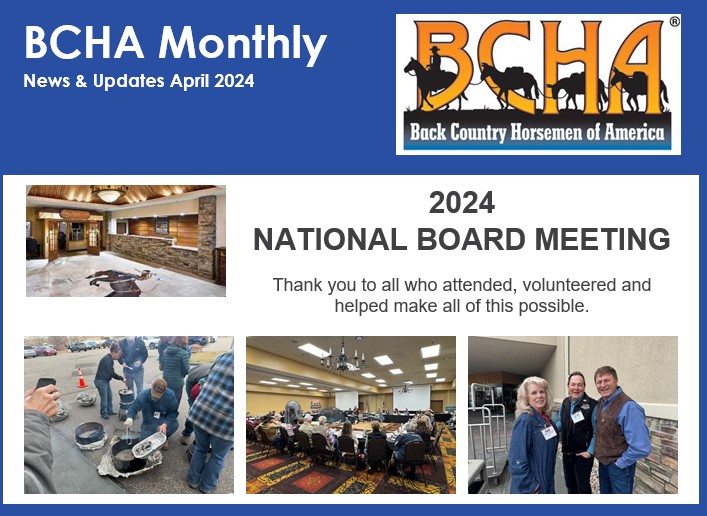
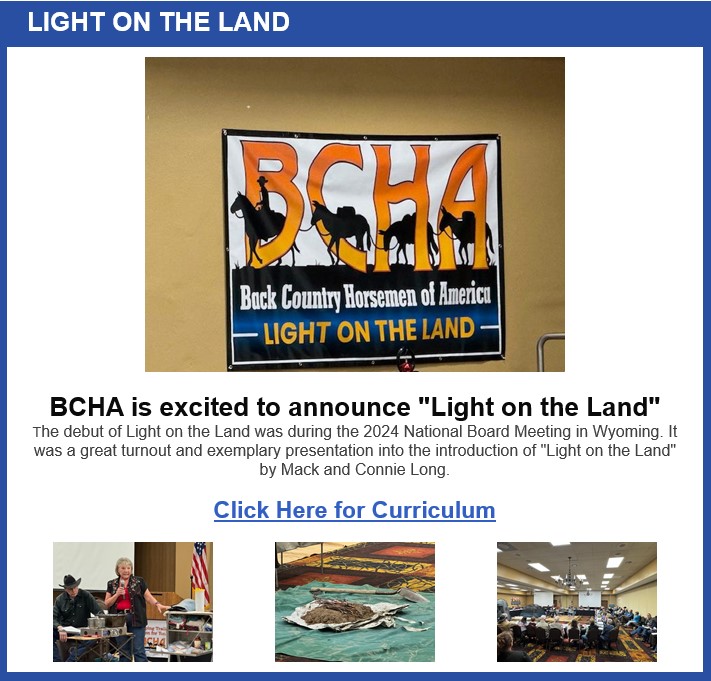
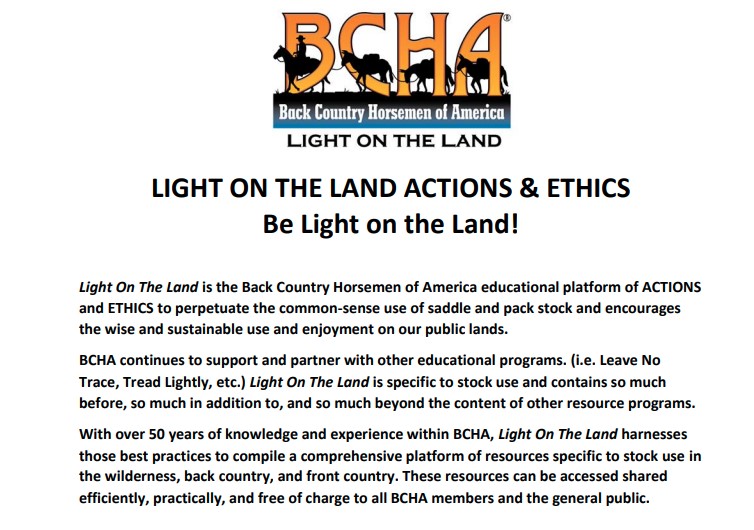
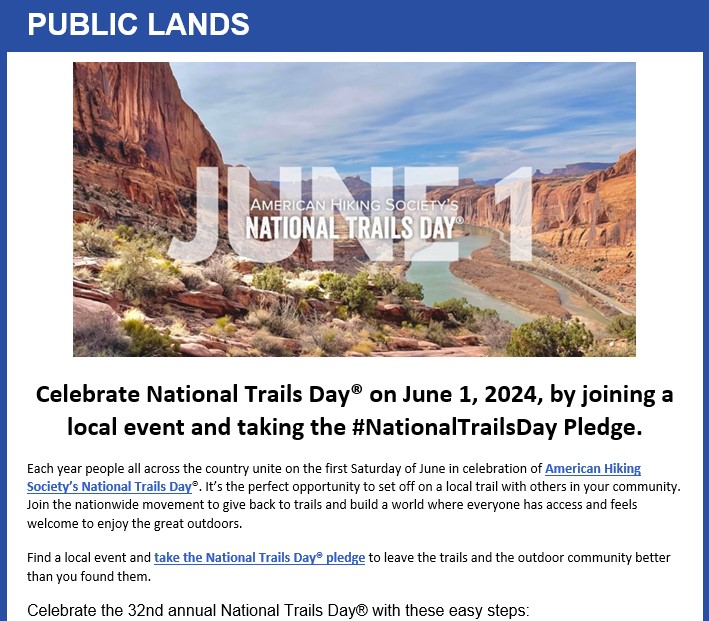
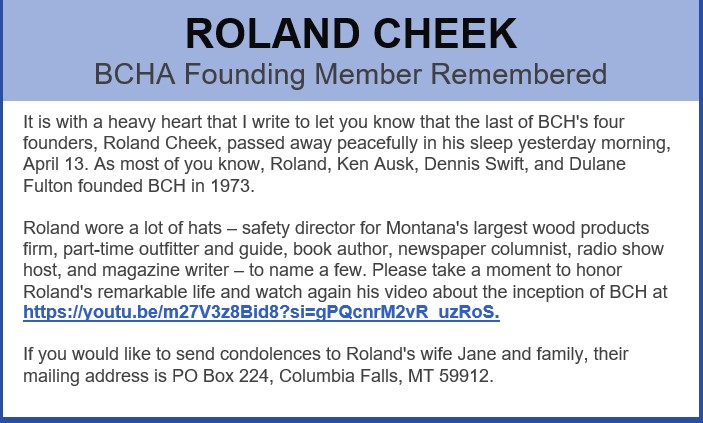 Watch Video
Watch Video